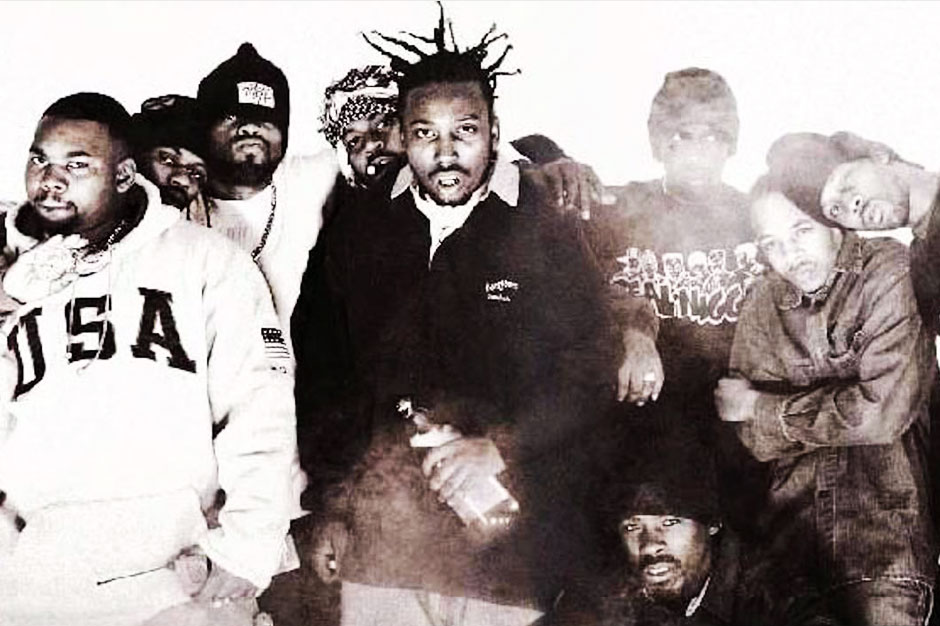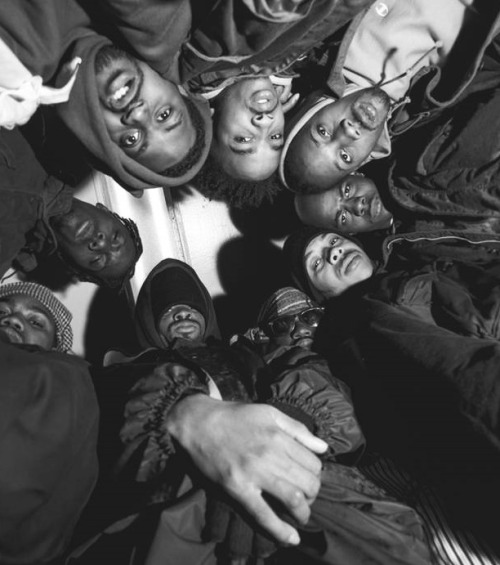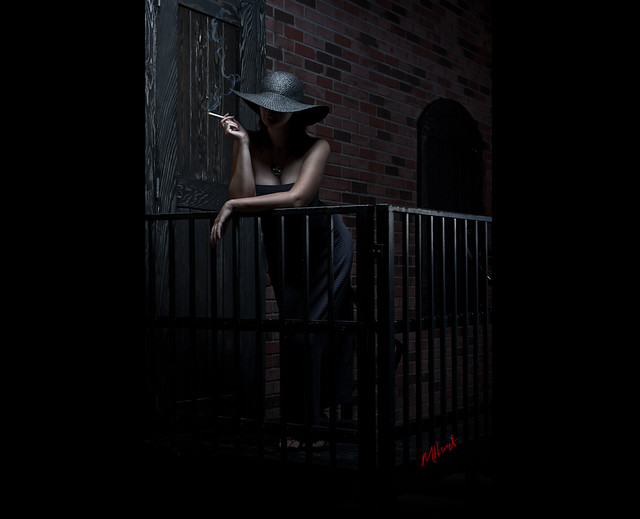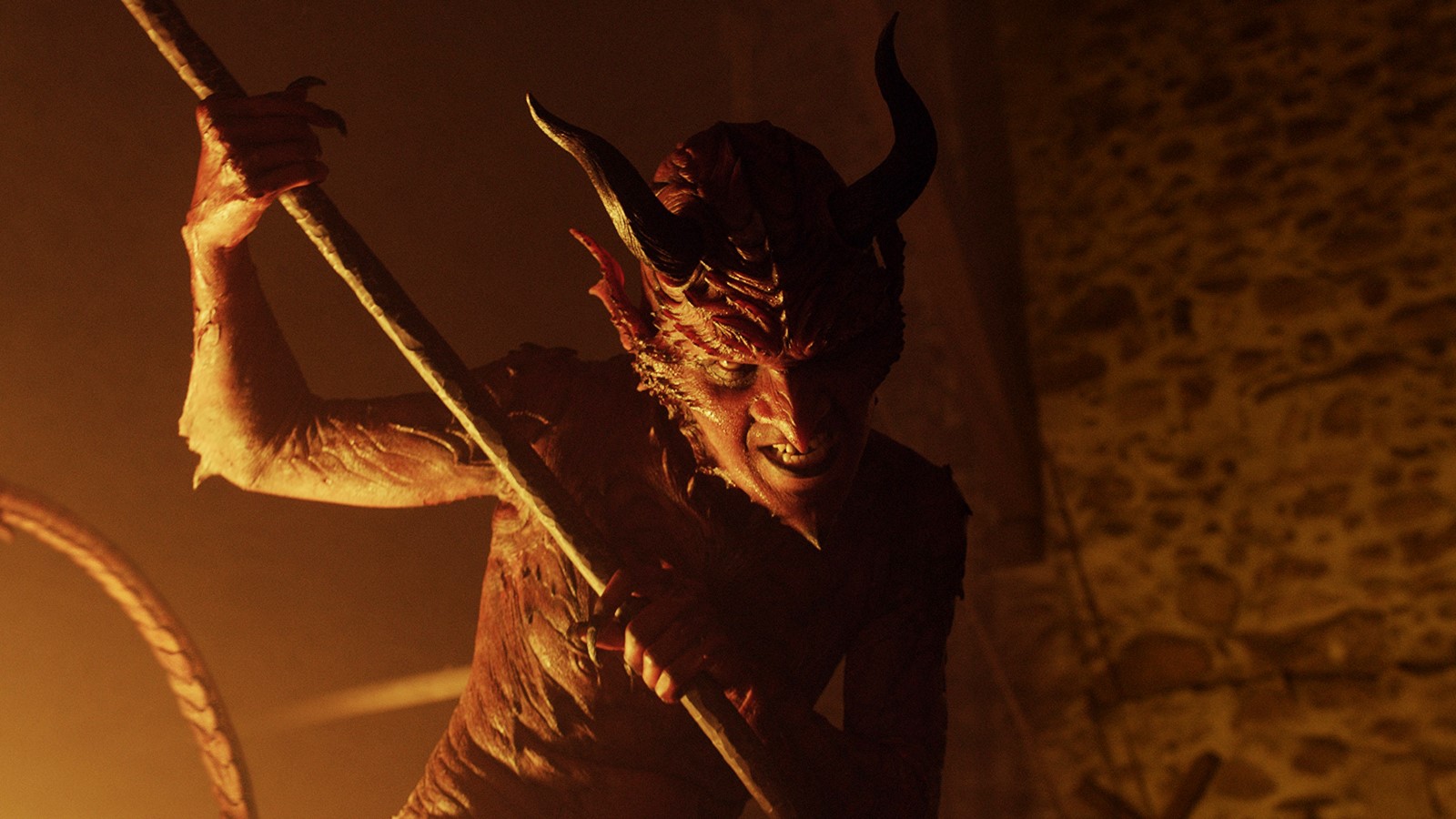I like my heroes complicated, flawed and tortured, gritty but with at some redeeming qualities. We shouldn't always like our antiheroes, and we should question the way we feel about them at some point or another. They own the true essence of yin and yang, the light and the dark, the good and the bad, the great duality of man. Below is a list of the 10 best in movies and TV.
10. John Creasy (played by Denzel Washington in Man On Fire)

John Creasy is a retired CIA agent who reluctantly takes a job protecting a young girl named Pita in Mexico City, a location running rampant with cartel ransom kidnappings. He's all business at first, but more time with Pita sees their relationship blossom, turning Creasy into a father figure and a best friend to the young girl. He attends her swim meets, coaches her on the basics, protects her to and fro, and she even names her stuffed animal bear after him. He doesn't sound so bad, right? Well, when Pita is targeted by the cartel, with the help of some crooked Mexico City cops, Creasy is shot and left for dead while Pita is snatched up the bad guys. When the money drop, arranged by Pita's wealthy, crooked father, is hijacked, the cartel shrugs their shoulders and kills poor Pita.

After he recovers, Creasy is no less shaken by Pita's death than he was when he first found out. After visiting her room and reading through her diary, riddled with tokens of love from the little girl, Creasy sets himself on a deadly mission for answers - and to make anyone associated with Pita's death pay with their life, including the cartel and the crooked cops. Why is Creasy an antihero? He cuts off the fingers of the cops, places explosives up their hind parts, and blows up cars with a bazooka in the middle of broad daylight. With the death of Pita, which Creasy comes to find out was staged, he becomes a man on fire, setting into motion a bloody chain of events that end assuredly with a pound of flesh.
9. Clarence Worley (played by Christian Slater in True Romance)

I feel like not enough people know about the fine piece of work that is
True Romance. Clarence Worley is immediately likable, showing us his love for kung-fu movies, comic books, and Elvis. He loves Elvis so much that the King, played by Val Kilmer, often shows up in Clarence's overactive imagination to give him pep talks. Clarence's boss hires a call-girl, Alabama, to show up at the movies and give young Clarence the night of his life. The problem is, Alabama is looking for a way out, and she falls head over heels in love with Clarence, and vice versa. But in order for Alabama to leave her past behind, Clarence has to confront her pimp, Drexl Spivey, who is one mean baddie. After Clarence upends him, he grabs a bag of what he thinks is Alabama's clothes and belongings. Turns out, it's actually a bag full of cocaine that belongs to the Coccotta crime family and the notorious gangster, Blue Lou Boyle.

Clarence and Alabama soon take off from Detroit to LA, where they meet up with up-and-coming actor and friend, Dick Gregory. Dick soon points Clarence in the direction of a Hollywood, big-shot director, who is looking score the boatload of the cocaine Clarence found back in Detroit. The police soon catch wind of the deal and set up a sting operation which pits Clarence against the police, the Italian mob, and a pair of Hollywood bodyguards, while Alabama struggles in her own battle against a mob henchman. Why is Clarence an antihero? Because he's certainly lovable to the audience and Alabama, though he totes a massive case of cocaine from one side of the country to another, has a shootout with cops, and murders a dreadlocked scumbag for the love of his life.
8. John Smith (played by Bruce Willis in Last Man Standing)
 Last Man Standing
Last Man Standing is by far my favorite Bruce Willis vehicle, his jungle war movie
Tears of the Sun coming in at a distant second. The movie is a Roaring Twenties delight in the guise of a spaghetti western. Italian and Irish mobs based out of Chicago compete for booze shipments during Prohibition in the midst of a desolate Texas town. Bruce Willis, going by the name he gives to the mobsters, John Smith, plays both sides of the gang war, trading alliances in order to make some money while he's hiding away from troubles in the big city. Smith has done some nefarious things, a circumstance which begged for the prequel we never got. He's good with his twin pistols, using them to vanquish the mobsters on behalf of the women he meets and silently swears to protect. The neutral town sheriff tells Smith at one point, "When you go down, it'll be over a skirt."

Smith first kills one of the Irishmen, a happening that surprisingly impresses the boss, Doyle. While he's trying to hire Smith, the lone gunman goes to work for Stassi and the Italians instead, where he meets the starlet charms of Lucy. He sees her behind Strassi's back, which may serve as the precursor for Strassi and Smith's falling out. This is when Smith goes to work for Doyle and Irish. Hickey, a mob goon played by endearing charms of Christopher Walken, is immediately weary of Smith, and with good reason. Smith again proves his allegiance to the victimized femme fatale, a circumstance that puts he, Hickey, and Doyle on a collision course. Why is John Smith an antihero? Yeah, he has his enduring qualities, but did some bad things back in the big city, and he uses people and their agendas for his own gain.
7. Ragnar Lothbrok (played by Travis Fimmel in Vikings)

I sure am glad the History Channel exists in my lifetime, and that they decided to make their only syndicated show about the trials and tribulations of my Nordic ancestors, the Vikings. The show
Vikings revolves around the legendary deeds of Norseman Ragnar Lothbrok. In the early seasons, we see the character evolve, tackling the shores of England, the ins and outs of family life, and grappling with the roles of farmer, earl, king, and finally, legend. He takes an English monk named Athelstan captive, only to become his best friend. We watch Ragnar sack new lands, sure, but we also see him tangle with his religion, or lack thereof. By the first season, he is completely loyal to the Norse gods, doing anything and everything to appease them. By his final, he's questioning the existence of god, the Christian god and Odin, resolving that man is ultimately responsible for creating his own fate. It takes Ragnar many wives, many sons, many battle campaigns, and much exposure to other cultures to come to this conclusion, and we get to see every one of them in the show's long-going history.

Why is Ragnar an antihero? Because he dishonors his wife Lagertha when he shacks up with Swedish princess Auslag. He soon develops a nasty heroin addiction after crossing paths with a Asian slave. He sacks cities and kills his share of rivals, all in the name of plunder and personal glory. You're not human if you aren't mad at Ragnar from time to time, but by the end of his life, after his sons by Lagertha and Auslag have grown to squabble over their father's legacy, Ragnar has life figured out and what's left is a humble man, full of integrity, embracing his fate so that his sons can follow in his footsteps.
6. Jax Teller (played by Charlie Hunnam in Sons of Anarchy)

If there was ever a Ragnar Lothbrok for the modern age, it would be Jax Teller. It's safe to say that motorcycle gangs are the modern version of Vikings, with their scruffy appearances and their Viking ships traded in for roaring Harleys. Jax's father, John, was once the president of SAMCRO, or the Sons of Anarchy Motorcycle Club Redwood Original. Jax grows up through the ranks trying to find a connection with his deceased father, who's best friend, Clay Morrow, has taken over as club president. Tensions eventually come to a head, and Jax becomes the new ruler of the Sons, the grittiest motorcycle club and criminal element in the fictional town of Charming, California. He and Ragnar Lothbrok have a lot in common. Both rule their roost, both question their existence, and both try to lead as normal a family life as they can given all their taboo exploits. Jax murders his share of offenders, orders up more from his loyal brothers, struggles his way through both the internal and external conflicts that plagued the show's tenure.

Why is Jax an antihero? He was very likable, but yes, he occasionally murdered folks, including his own mother. He also occasionally reached out for the nearest extramarital affair, and while we were often angry at the ruggedly handsome president, we still rooted for him in all his charisma and familial loyalty. Jax is a highly-flawed character, but that's probably the most distinguishing feature of the classical antihero. Every decision he makes is in the best interest of his club, to which he shows the most intense amount of loyalty.
5. Marv (played by Mickey Rourke in Sin City)

Marv is a graphic novel character who popped to life in Frank Miller's film adaptation of
Sin City. This film was like no other I'd ever seen, gritty and unrelenting in its quest for noir sensibilities. Three different stories were essentially tied into one, with a ragtag crew of seedy characters battling against the corrupt powers that were in a city unsafe for most. Marv was by far the most colorful of these characters, brutal and loyal in his singular mission. He has fallen in love with an angel of a woman named Goldie. She's a prostitute, yes, but she was the first person to show genuine kindness to a bum like Marv. When she is murdered in her sleep, the grizzled warrior takes to the streets to find who did it, and why they did it. This leads him to Goldie's twin sister, Wendy, who helps soft-hearted brute track down the sinister forces responsible.

Why is Marv an antihero? He doesn't have the best attitude about life in general. He grumbles his way here and there, and kills a lot of people on the way to finding Goldie's killer. He basically tells any and every cop to kiss off, begs them to pour on the pain, and murders the bad guys in depraved ways, the most prime example having something to do with a hacksaw. Marv seems like a dangerous guy to know, but you can't help but applaud him for his brutal mission.
4. Eric Draven (played by Brandon Lee in The Crow)

Brandon Lee died tragically, nearly the same way his father, legendary martial artist and philosopher, Bruce Lee, did. That didn't stop him from leaving his legacy behind, with
The Crow receiving quite the cult following after his death.
The Crow was his breakthrough role, much like Heath Ledger and his Joker. In a scene in which his character is shot, he was really shot by a faulty blank and died hours later in the hospital. Brandon was trained as a martial artist his entire life, but went out of his way leave it out of his role as Eric Draven, attempting to bring a new dynamic to the character.
Why is Eric an antihero? He's a walking dead man. He rises from the grave a year after he and his fiancee are killed in order to dish out street justice toward the ones responsible. He makes a pincushion out of one victim, overdoses another, wires another to an exploding car, and tosses the last out of a multi-story window. Eric is kindhearted toward little girl Sarah and cop friend Albrecht, but ruthless and cold-blooded toward the killers. He's a wanted man, a vigilante, which always puts one just outside arm's reach of the law.
3. Frank Castle (played by John Bernthal in The Punisher)

The Punisher has been brought to the screen many different times. Method actor John Bernthal's latest edition is undoubtedly the best, showing up first in the second season of Netflix's
Daredevil, then starring in his own spin-off series. In both, Bernthal plays Frank Castle, an ex-special forces soldier whose family is murdered in front of him. Frank takes revenge on mankind, mostly slaying mafia figures and other criminals with the vast array of weapons at his disposal. His introduction comes simply enough, but it soon puts him on trial for his crimes, landing him in a prison setting where the odds are certainly stacked against him. In his own series, he's witness to an international war crime, and once those responsible find out he's actually alive, they send out the dogs for him.

Why is Frank Castle an antihero? He plays the role of judge, jury, and executioner on the streets, becoming a vigilante for the sake of his murdered family. Is he right? Not really. Do we still like him? Absolutely. He's tough, hard to kill, and protects the innocent as he looks to uncover one plot after another. He slays a whole brood of prison inmates with wooden pokers and prison shanks as they try to murder him. This is hardly the stuff that Captain America is made of.
2. Michael Corleone (played by Al Pacino in The Godfather)
 The Godfather
The Godfather was way ahead of its time in terms of portraying an antihero like Michael Corleone. We first see Michael as a US soldier returning from active duty. He's surrounded by his brothers and father, who are all active members of an organized crime ring in New York City. His father, Vito, lives through an assassination attempt, which only pulls Michael into the family business full time. From there, he kills the two men responsible for his father's shooting in a restaurant meeting, goes on the run to Sicily, and returns to take his father's place as the undisputed boss.

Why is Michael an antihero? We care about he and his family from start to finish. Yes, they are members of the mafia, but we get to know them as people, and we begin to admire them for their ruthlessness. When Michael becomes the boss, his killing days are over - well, kind of. He orders up the cold-blooded slayings of the other ruling mafia families while he repents of his sins at Mass, becoming godfather to his infant niece - the one whose father Michael orders strangled to death in the mayhem.
1. Driver (played by Ryan Gosling in Drive)

Maybe I'm a little biased, but
Drive is my favorite movie. Gosling plays the role so well, a Hollywood stunt driver by day and getaway driver by night. If that's not duality, I don't know what is. His criminal lifestyle takes a halt when he meets Irene and her young son, Benicio, his next door neighbors. Irene's petty criminal husband has just been released from prison, and it isn't long until he's back to his nefarious ways, indirectly pulling Irene and Benicio into harm's way. This is when Driver (he's so cool, he doesn't need a name) flies into action. He's smitten with Irene and Benicio and will allow nothing bad to happen to them, no matter the cost. The whole time he's on his mission to protect them, he wears silk jacket with a scorpion on the back - his unofficial superhero's costume. He definitely strikes like a scorpion, as Driver gets ultra-violent toward the underworld element.

Why is Driver an antihero? He drives brilliantly as a getaway driver for bank robbers and the criminal element. We know he gets a thrill out of this, but we never see his reaction to it, as Driver is as stone-faced as they come. On a mission to protect Irene, Driver brandishes a hammer to beat bad guy brains in. He also wields a shotgun and a knife here and there, anything it takes to fight off the baddies who're out for Irene and Benicio. This movie is a gory one, and it's usually Driver who's making the blood fly.
 The 9 members of Wu-Tang Clan, RZA, GZA, Raekwon the Chef, Inspectah Deck, Ghostface Killah, Masta Killa, U-God, Method Man, and Ol' Dirty Bastard, affectionately referred to their own hometown of Staten Island as Shaolin. Shaolin was a staple of the old Shaw Brothers kung-fu flicks the group was raised on, a sacred place far away from the rest of Chinese civilization where true enlightenment and kung-fu styles were often achieved.
The 9 members of Wu-Tang Clan, RZA, GZA, Raekwon the Chef, Inspectah Deck, Ghostface Killah, Masta Killa, U-God, Method Man, and Ol' Dirty Bastard, affectionately referred to their own hometown of Staten Island as Shaolin. Shaolin was a staple of the old Shaw Brothers kung-fu flicks the group was raised on, a sacred place far away from the rest of Chinese civilization where true enlightenment and kung-fu styles were often achieved. Wu-Tang Clan have released seven studio albums as a group, and while 2014's A Better Tomorrow comes in at a close second, Enter the Wu-Tang (36 Chambers) was no doubt their best. There was something about the brander newness of the sound and the concept. There was something about the group's varied styles and approaches to the mic, about their clever ways of associating hip hop references to those of Shaw Brothers kung-fu flicks. There was something about their love for these movies because of the brotherhood of the protagonists who always had each other's back, no matter what. No one member has ever publicly beefed with another, only reuniting year after year to drop new albums, not to mention all the guest spots the members do on each other's solo albums. RZA created something special when he formed Wu-Tang Clan, and their debut album is one that has no doubt left it's mark on American hip hop culture forever.
Wu-Tang Clan have released seven studio albums as a group, and while 2014's A Better Tomorrow comes in at a close second, Enter the Wu-Tang (36 Chambers) was no doubt their best. There was something about the brander newness of the sound and the concept. There was something about the group's varied styles and approaches to the mic, about their clever ways of associating hip hop references to those of Shaw Brothers kung-fu flicks. There was something about their love for these movies because of the brotherhood of the protagonists who always had each other's back, no matter what. No one member has ever publicly beefed with another, only reuniting year after year to drop new albums, not to mention all the guest spots the members do on each other's solo albums. RZA created something special when he formed Wu-Tang Clan, and their debut album is one that has no doubt left it's mark on American hip hop culture forever.























